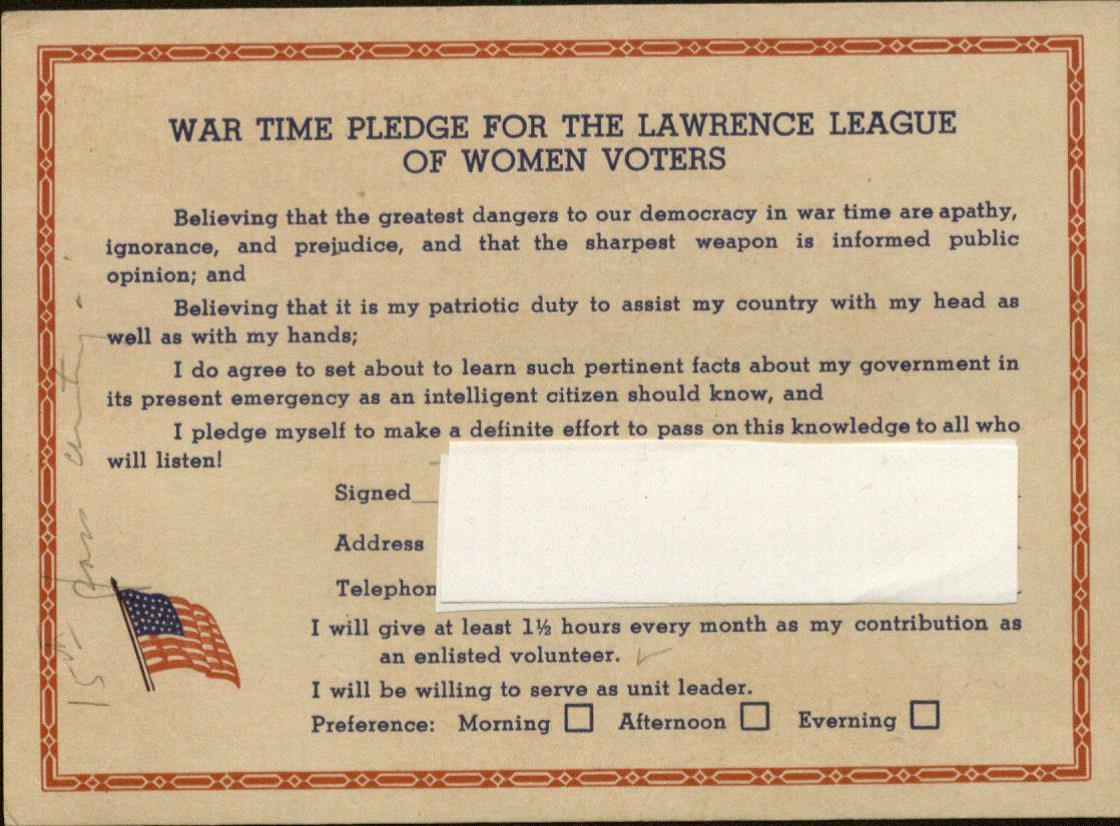Happy Election Day!
November 3rd, 2015November 3rd is Election Day here in the U.S. and although it’s not time for the presidential elections, the races and ballot initiatives taking place are no less vital. To celebrate the importance of civic engagement, I’ve selected a few items from Spencer Library’s Kansas Collection that highlight different ways of being politically active.
One of our researchers from the University of Chicago found this delicious thank-you note. Coffeyville, Kansas, native Bruce McKinney was thanked by Bill Clinton and Al Gore for his vote by receiving his very own copy of Hillary Clinton’s Chippers recipe!
Hillary Clinton’s Chippers Recipe, circa 1992-1996.
Papers of Bruce McKinney, 1900-2008. Call Number: RH MS 1164.
Click image to enlarge.
Mervyn Anderson was an active member of the League of Women Voters of Kansas. Her dedication to informing Kansans on political issues and candidates is evident in these two items from her papers.
War time (probably referring to the Vietnam War) pledge card for the
League of Women Voters of Lawrence, Kansas.
Mervyn Anderson Papers, 1956-1987. Call Number: RH MS 1091.
Click image to enlarge.
Cover of the April 8-9, 1959 League of Women Voters State Convention
program in Salina, Kansas. Mervyn Anderson Papers, 1956-1987.
Call Number: RH MS 1091. Click image to enlarge.
Many Kansans have engaged politically by serving in local, state, or national government. Robert C. Caldwell is an excellent example of a public servant to the city of Salina, where he was elected as the first African American mayor in 1970.
Two identical keys to the city of Salina, Kansas, undated.
The key at the top displays the side engraved with Salina, Kansas,
while the key on the bottom is engraved with Mayor’s Key.
Robert C. Caldwell Family Papers, 1922-1999. Call Number: RH MS Q119. Click image to enlarge.
Mindy Babarskis
Library Assistant and Supply Coordinator







![Photograph of Ardmore [Oklahoma] Police Department members pouring out barrels of alcohol, November 22, 1916](https://blogs.lib.ku.edu/spencer/wp-content/uploads/2015/10/RH-PH-P1617-1024x610.jpg)










